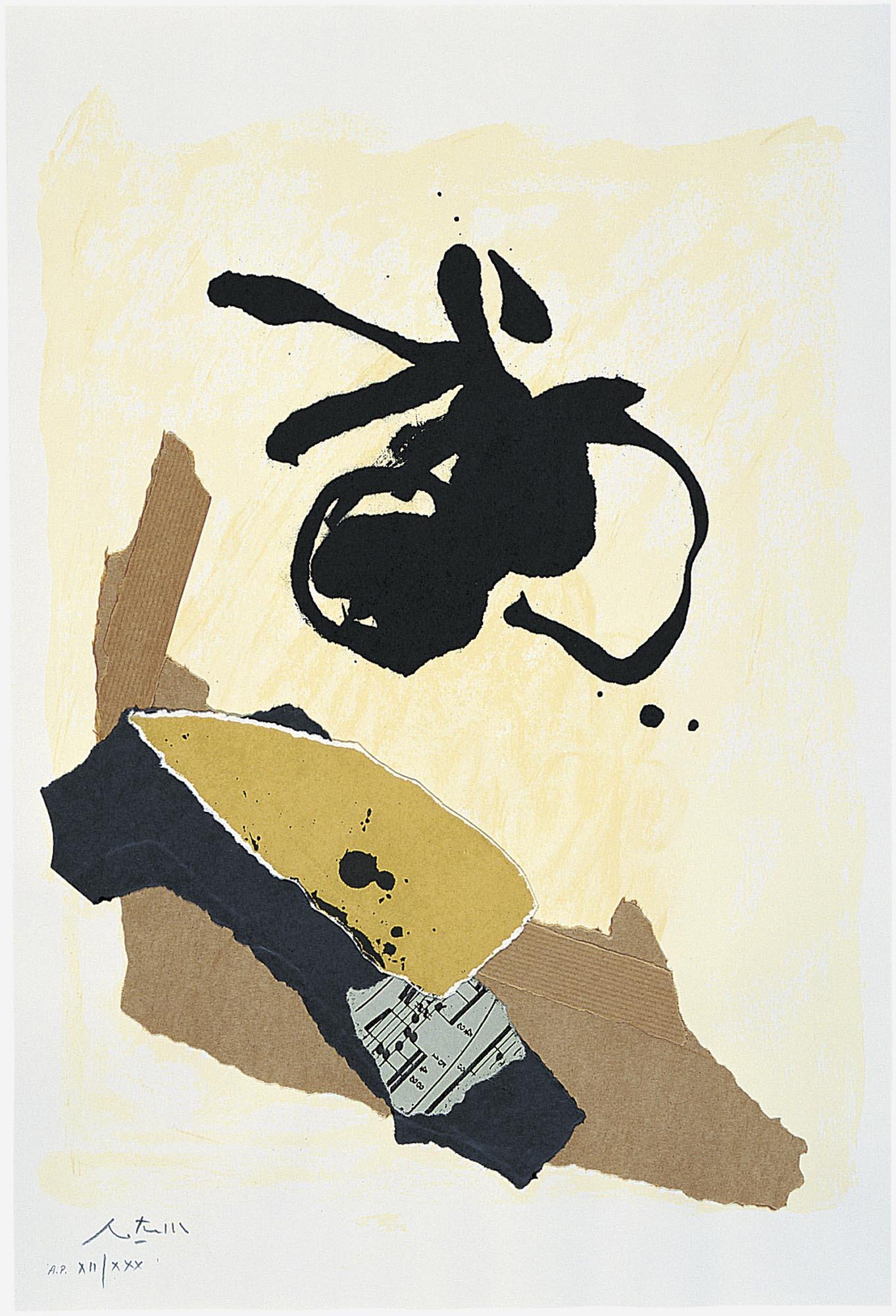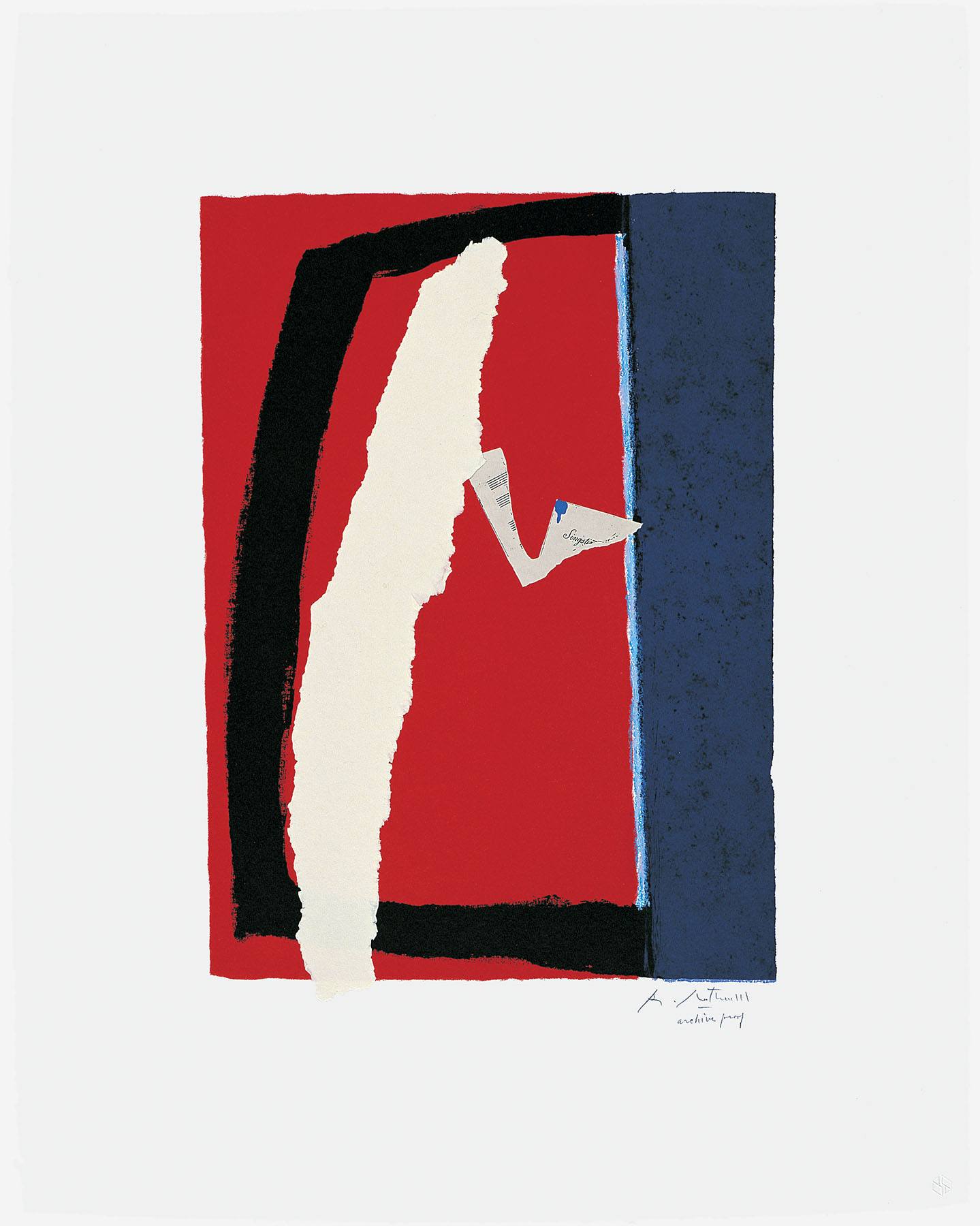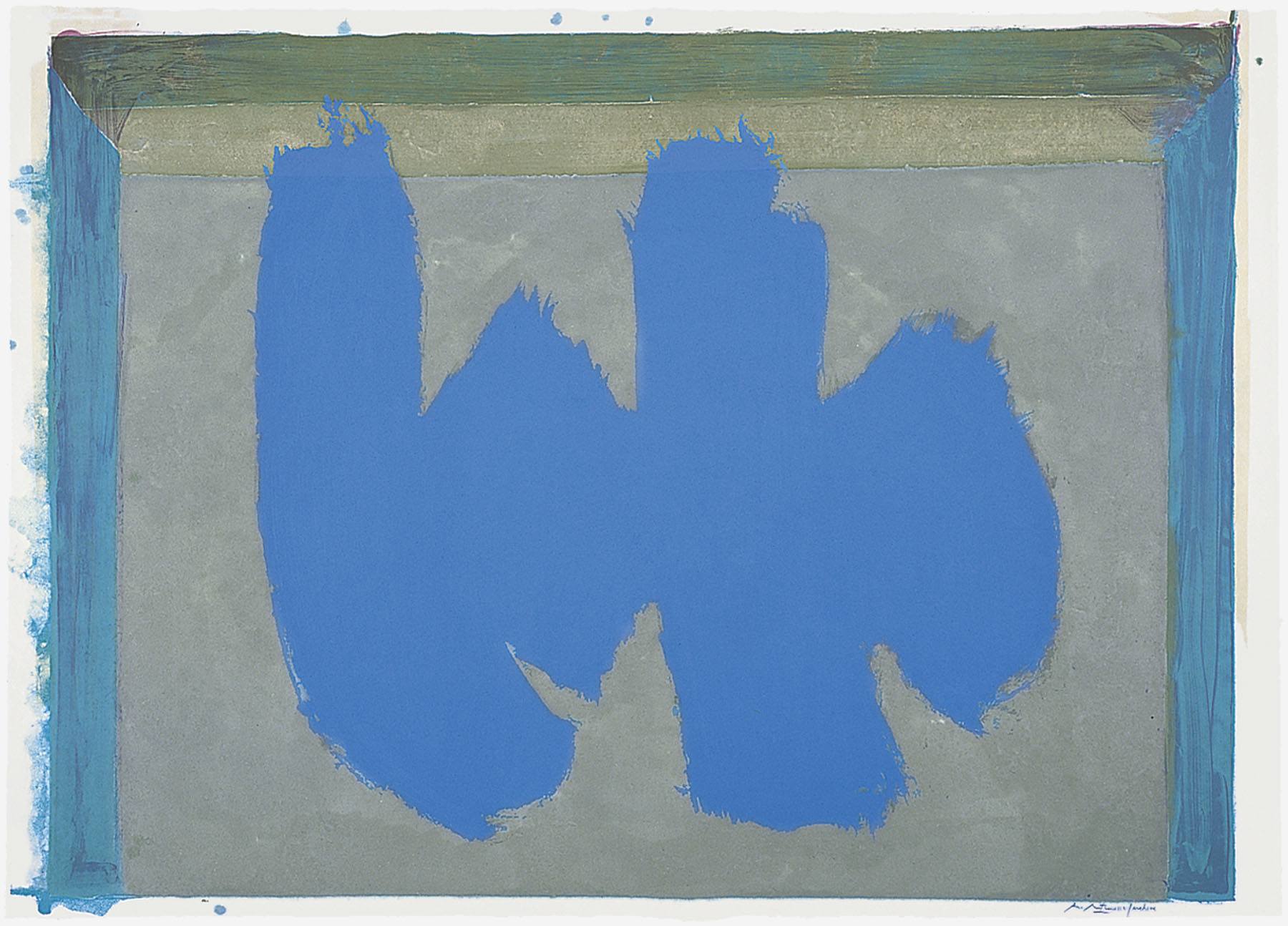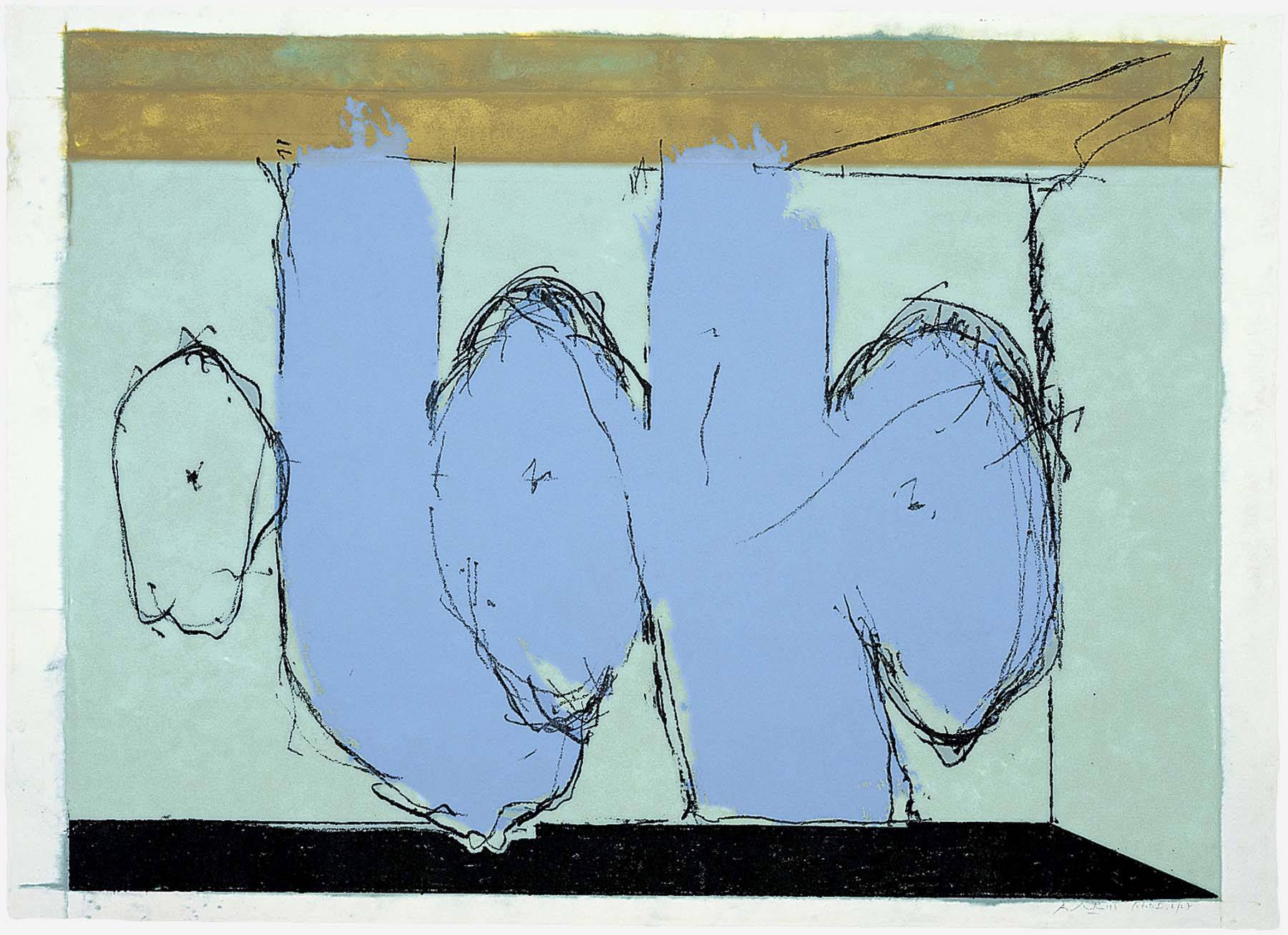Your browser is out-of-date!
Update your browser to view this website correctly. Update my browser now
CR 375(APIV)

Alphabet Series
1986

aquatint, lift-ground etching and aquatint, and collage
37 x 28 in. (94 x 71.1 cm)
two plates: 29 5/8 x 21 7/8 in. (75.3 x 55.6 cm)
Paper
Whatman paper; various papers
Signature
Signed "R. Motherwell" in pencil lower right
Inscriptions
Numbered in pencil lower right; artist's chop mark lower right
Edition
26, lettered A-Z
Proofs
1 archive proof
5 AP, numbered I/V-V/V
2 CP
1 HC
2 PP
1 TP
5 AP, numbered I/V-V/V
2 CP
1 HC
2 PP
1 TP
Publisher
Artist
Printer
Catherine Mosley, artist’s studio, Greenwich, Connecticut
Production Sequence
3 colors printed in 4 steps from 2 copper plates: 1. red – plate (aquatint); 2. brown – plate (aquatint, same plate as step 1); 3. black – plate (lift-ground etching and aquatint); 4. collage: various printed papers hand-torn by the artist and adhered to printed Whatman paper (from steps 1-3)
Concordance
B 343
Comments
Working with the same ground plate as a starting point for each member of the Alphabet Series. Motherwell deconstructed unsigned impressions of his own prints to synthesize the unique collage components for each impression. In doing so he created a composite of letter and calligraph that evokes the decorated capital letters of illustrated manuscripts. This synthetic method of construction recalls that used to create the compound images of The Basque Suite, which also play upon symbols of articulation. The Alphabet Series departs from all of Motherwell's other print endeavors in one significant respect. Each individual component of the series is unique, the edition, which includes lettered and designated impressions, was conceived as a totality. Although the letters might suggest a chronology, they do not sequence an order of fabrication.
...
Read more




